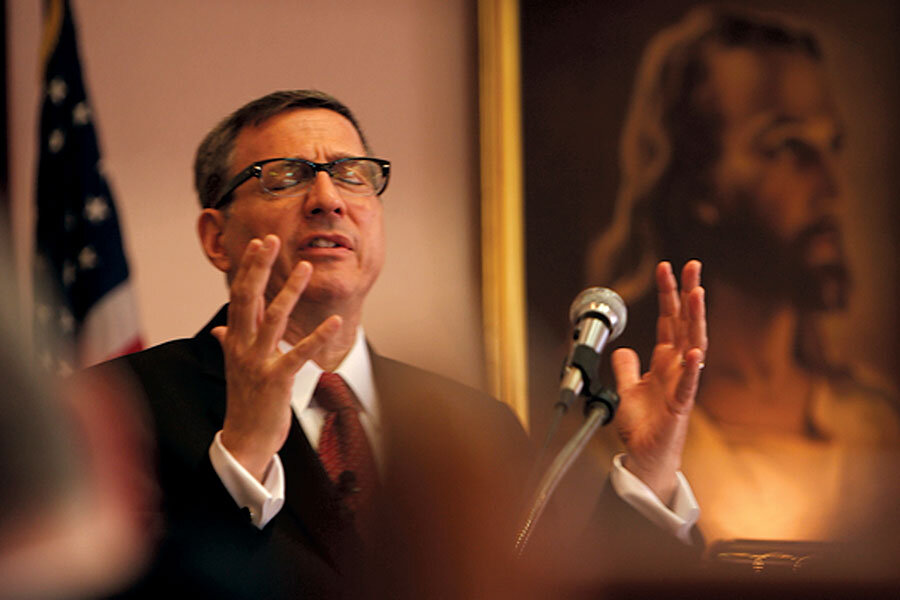'The Armor of Light' is gripping and a dual portrait in courage
The Rev. Rob Schenck, the centerpiece of Abigail Disney’s gripping documentary “The Armor of Light,” has long been a fierce opponent of abortion rights. He is aligned with the far-right wing of the Republican Party, which, of course, is heavily aligned with the National Rifle Association (NRA).
The film is about Schenck’s crisis of conscience as he concludes, in the wake of a series of mass shootings, including one at the Washington, D.C., Navy Yard not far from his home, that being pro-gun is not morally consistent with being antiabortion. Acting on this belief sets him against many of his constituents both inside and outside the church. The film amply registers the rancor as he speaks to parishioners and Evangelicals, many of whom are confounded or openly hostile to his faith-based arguments for gun control.
He forms an unlikely alliance with Lucy McBath, the mother of Jordan Davis, an unarmed teenager who was shot dead in a Florida parking lot. His death once again thrust the “stand your ground” laws into the headlines. Although pro-abortion rights, McBath, a devout Christian, finds common ground with Schenck when it comes to guns. Speaking of the Florida law, she says, “God did not give you the right to shoot to kill because you think you might be threatened.” Later on, she says, “We have replaced God with our guns.”
Schenck’s father was a secular Jew; his mother converted to Judaism from Catholicism. He remembers his father showing him photos of the concentration camps and saying, “This is what happens when good people do nothing.” Schenck’s religious conversion predated his political conversion, which came during the Reagan years. (With feigned horror, he admits he once voted for Jimmy Carter but also notes that, pre-Reagan, most Evangelicals voted Democratic.)
What seems to motivate Schenck’s latest conversion is a deep-seated belief that the culture of fear inculcated by extreme gun-rights advocates is both religiously and practically abhorrent. He says, “I am concerned about the NRA promoting the idea that the best way to solve the most vexing problems in our society is to be prepared to shoot people dead. That doesn’t sit well with me as a Christian moral vision.”
If Disney had simply recorded Schenck and McBath as they made their rounds and spoke their minds, the film might have come across as platitudinous. But, especially with Schenck, she gets inside the emotional processes that led him to question his original beliefs. Schenck describes how, in the wake of the Sandy Hook shootings, he brought himself to a rifle range and, hearing the loud crack of the guns, imagined the schoolchildren cowering with this sound in their heads. He realizes that everyone, including himself, has the capacity for violence. He deplores the NRA mind-set, which he believes divides the world into good people and bad people.
Disney might have included more temperate voices for gun rights than the ones on offer here. What we mostly get are people parroting the NRA line – an armed society is a polite society, etc. – and clips such as the one of Sarah Palin regaling a crowd with “Ammo is expensive. Don’t waste it on a warning shot.”
Compared with these exhortations, the principled resoluteness of Schenck and McBath shines. The film is a dual portrait in courage. Grade: B+ (Rated PG-13 for thematic content and brief strong language.)






